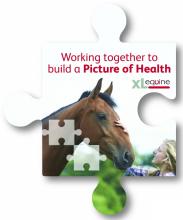Whilst about 60% of performance horses and 40% of leisure horses and ponies are estimated to be affected by stomach ulcers, many still go undiagnosed. This is because the signs of ulcers can be vague and could apply to a number of other conditions such as back problems, teeth problems, or hormones, or even put down to just being a ‘stressy’ or ‘poorly behaved’ horse!
So how can you tell if your horse has ulcers?
The only definitive way to find out is to have a gastroscopy, a non-invasive procedure where your vet will view your horse’s stomach via a tube and camera known as a video gastroscope.
However, to help you decide whether you need to consult your vet, consider if your horse has been showing some / any / or all of these signs;
- Agitation on girthing
- Change in behaviour / reluctance to work
- Picky appetite
- Poor performance
- Mild weight loss
- Dull ‘Starey’ coat
- Recurring mild colic
- Foals: Salivation and teeth grinding
Risk Factors;
- Increased work and training
- Fast work such as racing
- Jumping
- Stabling - the more time in the stable, the increase in risk, especially if food is restricted
- Travelling and competitions
- Moving yards or separation from established peer group
- Restricted diet and / or a high concentrate diet
- Some medications
If you think your horse may have stomach ulcers, contact your vet as soon as possible - 01363 772860.


